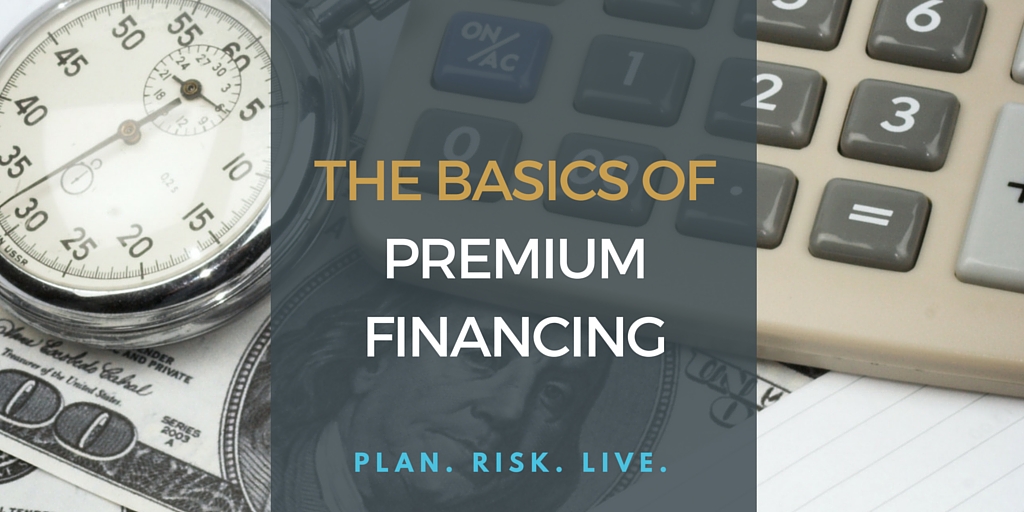The Basics of Premium Financing

What Is Premium Financing?
Premium financing is basically just borrowing money to pay life insurance premiums. High-net-worth individuals and companies use this strategy to obtain large amounts of life insurance with a minimal upfront expense. It is a means to retain capital by only paying interest on a loan that pays premiums instead of paying the actual premiums.
How Does It Work?
First, you need to set up an Irrevocable Life Insurance Trust (ILIT). This trust will hold the life insurance policy and pay the loan interest. Upon your death, the insurance proceeds are paid to the ILIT. Once the trust has paid off the loan, the rest of the funds will be distributed to your heirs.
After application and approval, a third-party lender loans money to the trust. The ILIT then uses the borrowed money to pay premiums to the insurance company. The trust also must make interest payments on the loan. You, the insured, will need to gift the trust the money to pay the interest. Gift taxes may be assessed on the funds that you give the trust.
Whether or not you or your ILIT obtains the loan, you are responsible for providing the collateral. Usually, you must post collateral equal to the difference between the cash surrender value of the policy and the loan balance. Collateral requirements are set by the lender, though, so sometimes the actual value of the collateralized assets can be greater than the loan.
Why Do People Use Premium Financing?
Many different kinds of people take advantage of premium financing. Sometimes they are owners of thriving businesses who do not want to stunt the business’s growth by withdrawing capital. Sometimes they are high-net-worth individuals who simply do not want to reduce their current cash flow. Sometimes they are people with vast real estate holdings with no interest in liquidation. Sometimes they are very profitable investors, not wanting to cash out their lucrative investments and pay the capital gains taxes.
No matter their situation, people use a premium financing strategy because they need life insurance for inheritance, business or tax issues, but they want to keep the funds that they would have to spend on premiums in more profitable investments.
Premium Financing Example
Here is a fictitious example of premium financing that illustrates the benefits of leverage and the opportunity cost involved:
John wants to buy life insurance with a $100,000 premium. His assets are currently invested and earning 10% returns. He has two options. He can finance the premiums at a 5% interest rate or he can cash out some of his investments to pay the premiums.
Option 1: Premium Financing
John takes the loan at 5% interest, so his interest payment is $5,000. He is left with $95,000 growing at 10%. At the end of the year, he has $104,500, which continues to grow year over year.
Option 2: Self Funding
Instead of financing the premiums, John opts to pay them himself. The $100,000 that he pulls out of investments had been earning 10%, so it is a $10,000 opportunity cost. Because he liquidated an investment, he also must pay capital gains taxes. Instead of pulling out $100,000 he has to pull out $120,000 to cover the cost of the taxes as well. Now, aside from the $10,000 opportunity cost, paying the premiums himself has cost him an additional $20,000.
Which option seems like a better financial decision for John? Which option might be best for you?
If you’re interested in learning more about premium financing or discussing if it’s the right strategy for you, feel free to get in touch.
